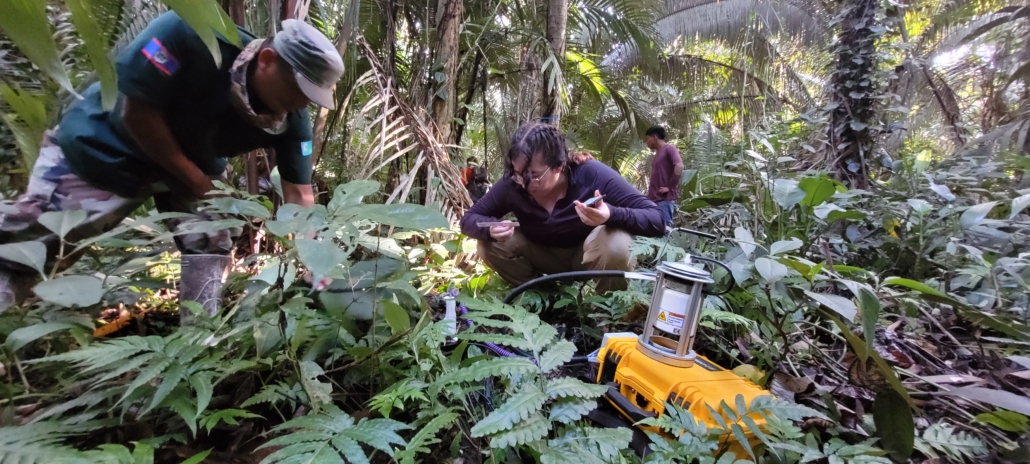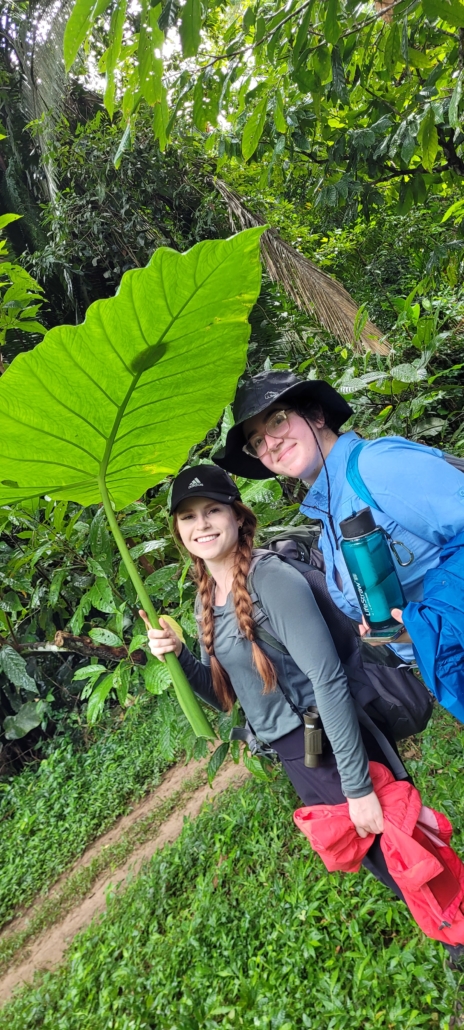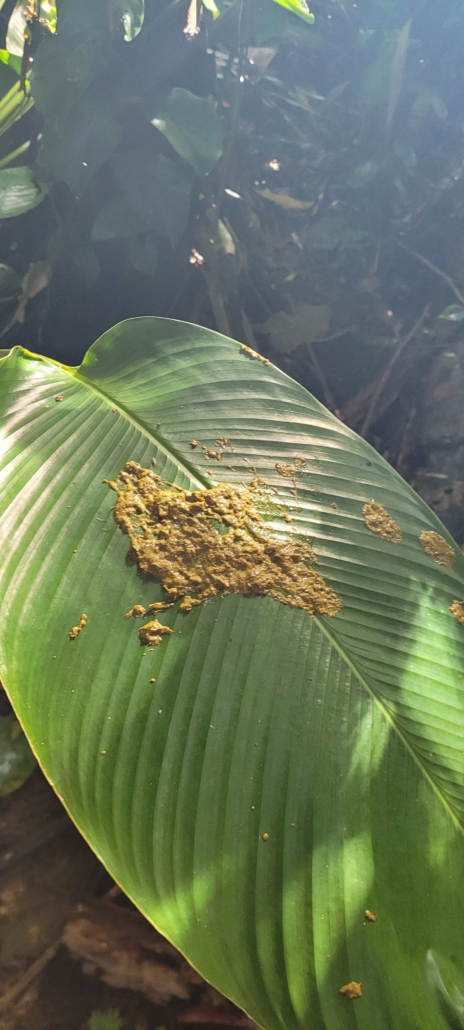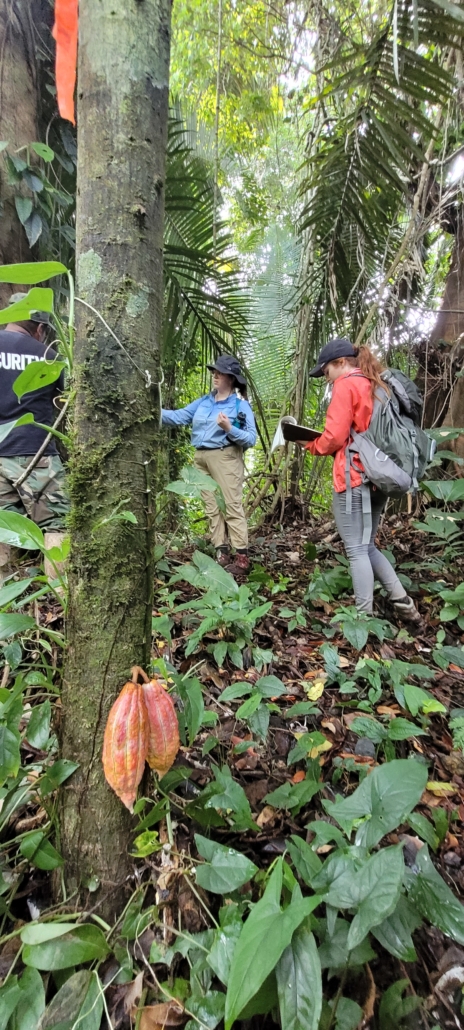Students and faculty from Kutztown University visit BFREE to initiate research projects focused on the endangered Yucatán black howler monkey
Drs. Chris Habeck and Matt Stone and four Kutztown University students majoring in Environmental Science (Corinne Ruggeiro and Nicole Prantow) and Biology (Stefan Grove and Sherry Jimenez) visited BFREE during January 2022 to explore the calling behaviors, movement patterns, and functional role that the endangered Yucatan black howler monkey plays in the neotropical forests of Belize. Here is their story.

By Dr. Chris Habeck
Monkeying around with climate change: howler monkeys and carbon sequestration in the tropical biome
We are witnessing dramatic shifts in global climate brought on by human population growth and technological advancement. Deforestation and the use of fossil fuels is causing global temperatures to rise, more extreme weather events, and severe pressures on the natural resources needed for the maintenance of biodiversity. Carbon is at the heart of these problems. When fossil fuels are burned and land is cleared through deforestation, the concentration of a potent greenhouse gas, carbon dioxide (CO2), increases in the atmosphere. Greenhouse gases are not inherently bad. In fact, they allow life to exist on this planet by regulating global temperatures within physiological requirements. However, the abrupt increase in atmospheric CO2 over the past several decades is alarming in that species and ecosystems are struggling – often unsuccessfully – to cope with the rapid environmental changes. Scientists are currently on the hunt for strategies to mitigate the impacts of climate change. Obviously, a reduction in fossil fuel use and land clearing are options to slow the increase of atmospheric CO2, but we also need to prioritize the removal of excess CO2 that is already in the atmosphere to minimize the current impacts of climate change. One way to achieve this goal is to maximize the ability of natural systems to sequester carbon from the atmosphere for long-term storage. Protecting tropical forests may be an important part of this process.
Tropical forests represent the largest biological pool of carbon on Earth. Unlike temperate and boreal systems that hold most of their carbon in the soil, most of the carbon in tropical forests is locked up in living biomass, primarily trees. Trees sequester carbon via photosynthesis and store much of it as wood for structural support as they reach to the upper canopy in search of sunlight. In their quest for solar energy, some trees store more carbon than others because of differences in wood density. Wood density is a measure of wood mass per unit volume, often expressed as g/cm3. Trees with high wood density values store more carbon. For instance, trumpet trees (Cecropia peltata) and inga trees (Inga pezizifera) have wood densities of 0.3 g/cm3 and 0.61 g/cm3, respectively. As such, forests dominated by inga trees would store twice as much carbon than forests dominated by trumpet trees. But which processes promote tree communities with high wood density how might we leverage those processes to maximize the carbon sequestering capability of tropical forests in general?
We think the Yucatàn black howler monkey (Alouatta pigra) has an important role in this process of carbon sequestration. Howler monkeys consume many fruits found in the upper canopy of tropical forests. The fruits of trees consumed primarily by howlers tend to have large seeds and large-seeded tree species tend to have relatively higher wood density than smaller-seeded tree species. As such, we think the selective feeding behavior of howler monkeys could enhance the carbon sequestering capacity of tropical forests. Put another way, if we allow this endangered primate to go extinct, we not only lose an iconic species, but also the functional benefits of their presence.
In January 2022, we traveled to BFREE to initiate a long-term research project with the goal of understanding if and how howler monkeys influence carbon sequestration. With the expert help of Ranger Sipriano Canti, we located several howler monkey troops and documented the identity and size of tree species under tree canopies where they were feeding and in random locations away from their activity centers. By measuring the girth (diameter at breast height) of the trees and referencing a wood density database, we used allometric models to estimate the carbon stored as wood. Preliminary results suggest that carbon storage under monkey activity centers is twice that of random areas of the forests, supporting the idea that howler monkeys provide a key functional benefit at BFREE. Our plan is to continue to document the influence of howler monkeys at BFREE to more fully understand how they contribute to the enhancement of biodiversity and ecosystem function.
Working at BFREE is exciting, not only because of the important research questions that can be explored, but also because faculty and students can immerse themselves in the biological and cultural diversity of Belize. We appreciate the kindness of all the BFREE staff and their openness in sharing their knowledge with us. The support we’ve received from everyone is amazing and has contributed to our desire to plan and execute long-term research projects at BFREE and continue to run our winter study abroad program. Also, BFREE is beautiful. The diversity of animal sightings is astounding, from jaguar tracks and scat to flocks of scarlet macaws and night walks with sightings of kinkajou, snakes, frogs, and insects – this place inspires. The work that BFREE does to protect this special place and their role in promoting biodiversity research and education is a benefit to us, our students, and society at large.






Leave a Reply
Want to join the discussion?Feel free to contribute!